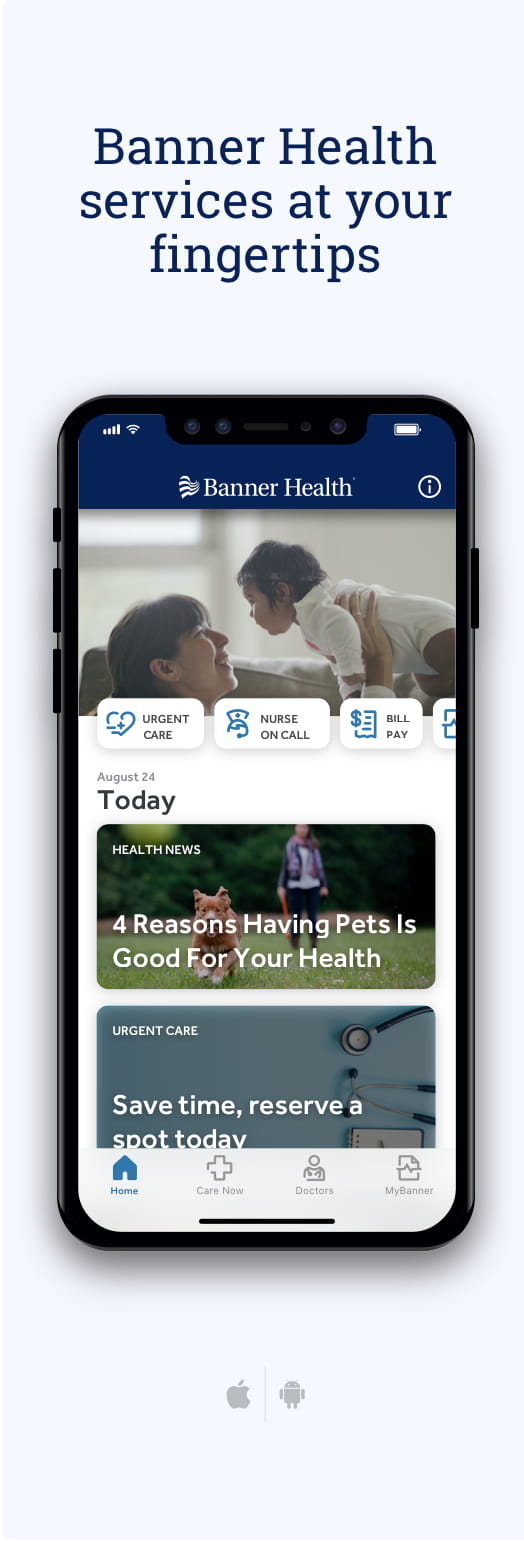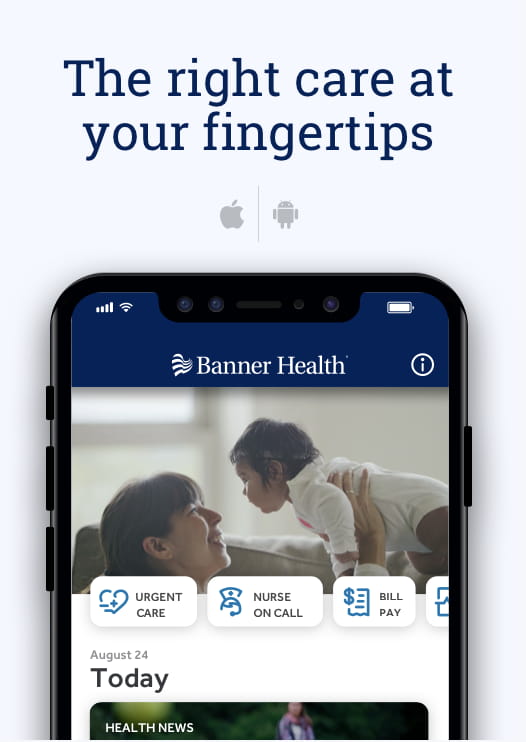Have you noticed your child wincing or limping due to heel pain? It’s a common concern many parents face, especially as their child has growth spurts and becomes more physically active.
Many kids will experience growing pains in their thighs, calves, shins or behind the knees. But pain around the heel bone and inside the foot also happens frequently in growing children.
While it may seem puzzling at first, there are some common reasons behind your child’s heel pain. We spoke with Ryan Miller, MD, a pediatric orthopedic specialist with Banner Children’s, who helped us understand the different causes and how to help your child’s heel.
The common causes of heel pain in kids
Sever’s disease
Heel pain frequently occurs in children ages 8 to 15 as their feet grow and the heel bone develops. As children become more active, they can increase their risk for injury and heel pain. The most common cause is called Sever’s disease (calcaneal apophysitis).
“Sever’s disease is a common overuse injury of a growth plate in the calcareous bone located in the heel bone,” Dr. Miller said. “It usually develops slowly and occurs with activity.”
Your child has growth plates between the middle and ends of their long bones. These plates help bones grow longer and wider. As your child grows, these plates turn into solid bone and close entirely by the end of puberty.
Sever’s disease causes irritation and swelling of the growth plate of your child’s heels. You may notice your child limping or complaining of sore heels at the end of an activity.
It is more common in children who are active in sports that involve running or jumping, like soccer, basketball, gymnastics and dance. It can also happen because they wear unsupportive shoes.
Plantar fasciitis
Plantar fasciitis is an overuse injury caused by irritation of the plantar fascia, the thick band of tissue that runs along the arch of the foot, from the heel to the toes. It’s more commonly seen in adults but also occurs in children, most frequently in older children and adolescents.
Plantar fasciitis often happens from repetitive stress on the plantar fascia, commonly during activities like running or jumping. “Other factors such as foot structure abnormalities (like flat feet or high arches), tight muscles in the calves and Achilles tendon and rapid growth during puberty can increase strain on the plantar fascia,” Dr. Miller said.
Symptoms of plantar fasciitis may start mild and get worse over time. Your child may describe pain in the bottom of the foot close to the heel or arch of their foot or limp or have trouble walking.
Achilles tendonitis
The Achilles tendon runs along the back of the lower leg to connect the calf muscles to the heel bone. When it comes inflamed, it causes tendonitis. Although most often seen in adults, Achilles tendonitis can affect children, particularly older kids participating in sports.
The most common sign of Achilles tendonitis is heel pain. It can also cause swelling, warmth and difficulty walking. Your child may notice it when they wake up first thing in the morning and put weight on their foot.
Fractures
Older children and teens are at higher risk for developing different types of fractures, including avulsion fractures and stress fractures.
“Avulsion fractures occur when a piece of bone is pulled away from the rest of the bone by the force of a tendon or ligament,” Dr. Miller said. “This can happen during sports or activities that require sudden changes in direction.”
Stress fractures are tiny cracks in the bone that develop due to repetitive stress or overuse, rather than a sudden force or change. They are often caused by repeated impact activities like running or jumping.
Your child may experience pain, swelling, difficulty walking and possibly bruising in the heel.
Treating heel pain in children
It can sometimes be difficult to distinguish Sever’s disease from other causes of heel pain. Your child’s health care provider will gather information about your child’s symptoms and physically examine their feet, pushing on their heels at different points to see where it is painful. They may also recommend an X-ray or advanced imaging.
Treating heel pain is often centered around relieving inflammation and pain. Common treatment options include:
- Rest: Encourage your child to take a break from activities that worsen the pain. Rest allows the inflamed tissue to heal and reduces the risk of further injury.
- Ice: Put ice packs on the heels for 15 to 20 minutes a few times a day to reduce swelling and pain.
- Pain medicine: Nonsteroidal anti-inflammatory medication (NSAIDs, like ibuprofen) may help reduce pain. Follow the instructions on the package.
- Stretch: Gentle stretches of the calf muscles and Achilles tendon can help loosen them up and take pressure off the heels.
- Get good shoes: Ensure your child wears shoes that fit well and have good cushioning and support, especially during activities.
- Use inserts: Sometimes, heel cushions, cups or soft insoles can give extra support and cushioning to their heels.
- Physical therapy: A physical therapist can show your child exercises to strengthen their muscles and improve how their feet work, which can help with heel pain.
If these treatments don’t help, your child’s provider may suggest other options like wearing a cast or boot or, in rare cases, surgery.
Takeaway
Heel pain in children is common, especially during times of growth. Although sports and physical activity have many benefits, too much can lead to overuse injuries and pain.
To prevent heel pain, invest in supportive shoes, avoid sudden increases in physical activity, have your child stretch often and teach them to take it easy and rest when they feel pain.
If their pain doesn’t go away or worsens, it’s important to see your child’s health care provider or a Banner Health specialist for help.


